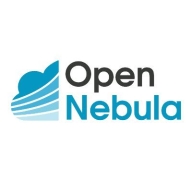


CloudStack and OpenNebula are competing in the cloud infrastructure domain. OpenNebula has the upper hand due to its adaptability and ease of deployment across varied infrastructures.
Features: CloudStack offers comprehensive support for hybrid and multi-cloud environments, advanced networking, and security features, and a centralized management system for scalability. OpenNebula has a lightweight footprint, provides a user-friendly interface, and supports flexibility across both private and public cloud platforms.
Room for Improvement: CloudStack can improve by streamlining its resource-intensive deployment process, simplifying the customization process, and enhancing its support for newer virtualization technologies. OpenNebula could benefit from expanding advanced networking capabilities, increasing support for multi-cloud environments, and improving its integration with additional enterprise applications.
Ease of Deployment and Customer Service: OpenNebula is known for its straightforward deployment and strong customer support, making it easy to manage various cloud infrastructures. CloudStack's deployment may require more resources, but it provides extensive documentation and community support for users.
Pricing and ROI: CloudStack is an open-source solution, potentially involving higher initial expenses due to substantial customization and resource needs. OpenNebula, also open-source, presents lower setup costs and an attractive return on investment for small to medium-sized enterprises.



IBM Turbonomic offers automation, planning, and right-sizing recommendations to streamline resource management, improve efficiencies, and optimize costs across virtualized environments and cloud platforms.
IBM Turbonomic is valued for its capability to optimize resource allocation and monitor virtual environments efficiently. It facilitates automated decision-making in VM sizing, load balancing, and cost optimization for both on-premises and cloud deployments. Users can leverage insights for workload placement, ensure peak performance assurance, and effectively right-size across VMware and Azure. The ongoing transition to HTML5 aims to improve visual and navigational ease, while expanded reporting features are anticipated. Opportunities for improved training, documentation, and integrations enhance platform usability and functionality.
What Are the Key Features?In finance, IBM Turbonomic aids in maintaining platform efficiency during market fluctuations. Healthcare organizations leverage its capability for resource optimization during high-demand periods to enhance patient care support. Retailers use it for planning in peak seasons, ensuring resources align with fluctuating demand to maintain performance continuity.
OpenNebula provides the most simple but feature-rich and flexible solution for the comprehensive management of virtualized data centers to enable private, public and hybrid IaaS clouds. OpenNebula interoperability makes cloud an evolution by leveraging existing IT assets, protecting your investments, and avoiding vendor lock-in.
OpenNebula is a turnkey enterprise-ready solution that includes all the features needed to provide an on-premises (private) cloud offering, and to offer public cloud services.
We monitor all Cloud Management reviews to prevent fraudulent reviews and keep review quality high. We do not post reviews by company employees or direct competitors. We validate each review for authenticity via cross-reference with LinkedIn, and personal follow-up with the reviewer when necessary.